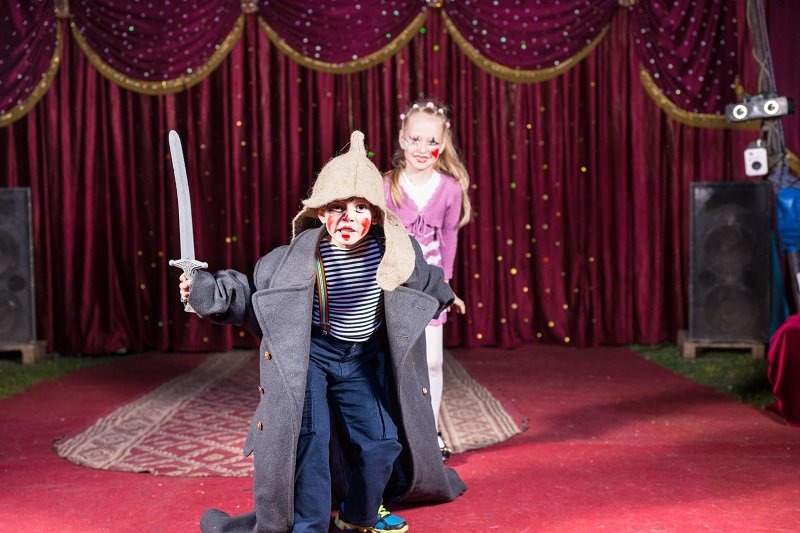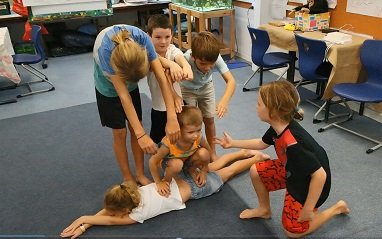Youth love to perform funny plays just as much as people like to watch them being performed! In this article I will share with you my 10 top tips for presenting a killer play, and I’m gifting you two awesome free short play scripts that you can immediately download, print, and engage kids in fun filled drama performances.
As a schoolteacher I’ve used these two plays many times over with kids as young as eight through to fifteen-year-old teens. They are short (7 or 8 minutes) and are hilarious, especially with the right actors getting into character.
These plays are perfect for class assembly performances and as a camp activity.
Here is a quick blurb on each, and the link to download. Enjoy!

Free Short Play Scripts pdf
High Noon
A slapstick comedy drama for 5 characters and a narrator. This script depicts a wild west cowboy setting where Billy the Kad kidnaps Whinny, the Lone Stanger’s girlfriend. Lone Stranger gathers a posse and pursues Billy. The action-packed drama ends in a shoot-out at high noon.
Suitable for children eight through to adults. The play takes about 7 minutes to perform. High Noon is an easy script to learn. You’ll have your team performing to an audience in no time at all!
Costumes are not necessary, but certainly enhance the presentation. It is impossible to mess this play up as it is already crazy!
Download High Noon Free Play Script
Mello
Another action-packed slap stick drama for 5 characters and a Master of Ceremonies. This short play requires audience participation, enhancing the energy in the room by engaging spectators.
Mellow is a kidnapping drama play, where Grimeface Evilslime kidnaps Poppysweet Daisychain. Harvey Smiles, the hero, comes to the rescue of his sweetheart.
This is a story of sorrow, evil, love and courage. The audience will be captivated! Allow 7 or 8 minutes for the performance.
Download Mellow Free Play Scripts
10 Tips for Awesome Drama Presentations
1. Engagement
Actors should nearly always be facing the audience, making eye contact, and smiling (unless their character requires them to be different). Doing so will draw the audience in, making each listener feel personally addressed. This exudes confidence and connects the audience with each of the characters.
It is important not to focus on prompt cards, a screen, or the floor. Actors should be seeking out the eyes of spectators, deliberately engaging them.
A good idea to further engage the audience is to consider moving off stage and interacting with people in the audience.
Other ideas to engage the audience:
- Asking questions of them
- Tossing something into the crowd such as squirting a water pistol or throwing a bucket of confetti at them
- Making a loud noise, like firing a cap gun or popping a balloon
- Use real names of spectators
- Single out one person in the audience and have that person the butt of the jokes, or include them into the play somehow

2. Gestures and Facial Expressions
This is especially important for slapstick comedy plays (like the free short play scripts pdf we have available for you to download).
Gestures and facial expressions emphasize the character you are playing, conveys energy, and it will spice-up the content.
Make sure gestures are appropriate and it is always good to exaggerate them, especially with slapstick plays.
Do your best to inject emotion into your acting. Your facial expressions should be friendly and open unless your character requires it to be different.
3. Props and Setting
It is usually best to not overdo the props. Having too many causes distractions and opens the risk of a prop not working to your plan. Hands free for gestures will be more effective than holding unnecessary props. Having said that, color, costumes, and key props will liven up your performance.
Designing a backdrop will add to the atmosphere. Plan where actors can come on stage and leave stage. Having a large obstacle, or a doorway backstage provides the means for actors to appear and disappear as required.
Lighting, sound effects and music can add effect and mood to the drama performance.
4. Rehearsals
Be prepared- practice makes for a perfect play. By being well prepared, you will feel more relaxed and confident in your role, and in turn allowing you to embrace your character fully.
Here are some tips with rehearsals and learning your lines:
- Experiment with different ways of presenting your character (voice, gestures, actions, costume).
- Rehearse in front of an audience to help you get used to your role in a public performance.
- Video yourself and watch it back.
- Practice in front of a mirror.
- Seek feedback from others.
- Practise the lines until you have it automatic (no longer requiring palm cards).
- Leave costumes until the play rehearsals are well underway.
5. Confidence
By appearing confident, you convey to the audience that you know your topic and have well prepared yourself.
Try to relax and calm your nerves. Try grounding yourself before a performance by taking 2 or 3 deep slow breaths.
6. Start and Finish with a Bang!
Captivate your audience straight away by starting with a bang! Gain their attention by doing something that may shock or awe them. Some ideas to consider:
- Try starting with a character arriving from the audience
- Share a personal story or joke
- Enter with a loud noise
- Blackout the lights
- Have something go wrong ‘deliberately’
- Introduce your characters with them coming out one at a time
- Play tension music or sound effects
Ending you play is as important as how you started. A poor ending will leave your audience uninspired. Whilst a strong ending will leave them talking-up your play.
7. Know your lines

It is always better if actors know their lines by heart. By doing so the presentation will be lively and enjoyable.
If you do require cards to keep you on track, then do not write down endless text that you will need to read. Write jot points to jog your memory.
Do your best to at least remember the beginning and ending of your presentation, allowing you the opportunity to make eye contact with your audience.
Palm cards should be inconspicuous and in plain color.
Never rush your lines, project your voice clearly and slowly. Use a characters voice embellishing the accent with intonation and expression.
8. Effective Pauses
Use pauses to emphasise a key message or key point. When done properly and deliberately, using pauses is a powerful tool to add a great deal of emphasis to your play.
Pausing is also helpful in giving you time to remember your next lines.
Confidence will exhume with deliberate pausing, and your listeners will be less likely to miss dialogue and meaning.
When the crowd laughs loudly or applauses during your act, pause for a moment so they don’t miss dialogue.
9. Where to stand?
How and where to position yourself when presenting your play is important. Always maintain regular eye contact with your audience. Therefore, avoid having your back to them. When in dialogue with other characters in the play, stand side on to the audience.
It is good to move around making full use of the stage. Come towards the front of the stage when it is your turn to speak.
If you plan to introduce the characters of the play, then have them come out to the very front of the stage. Do the same when you come together to bow and receive applause at the play conclusion.
It can enhance the performance having the narrator move onto the stage when it is time for them to speak, and off again when it is the characters turn; rather than just standing in the background.
10. Concluding Your Play
Always remember to thank and acknowledge the audience. This can be a job for the narrator.
All the actors come together at the front of the stage to bow/curtsy and receive the applause. Synchronicity with the bow/curtsy looks professional. During the applause make eye contact, smile and do not walk away until the applause is complete.
Free Short Play Scripts Final Thoughts
Have fun with the free short play scripts we have given you. Let us know how you go. Our intention is to add more fun drama plays for you to spice up your youth group or class. So, check back from time to time to see if we have.





